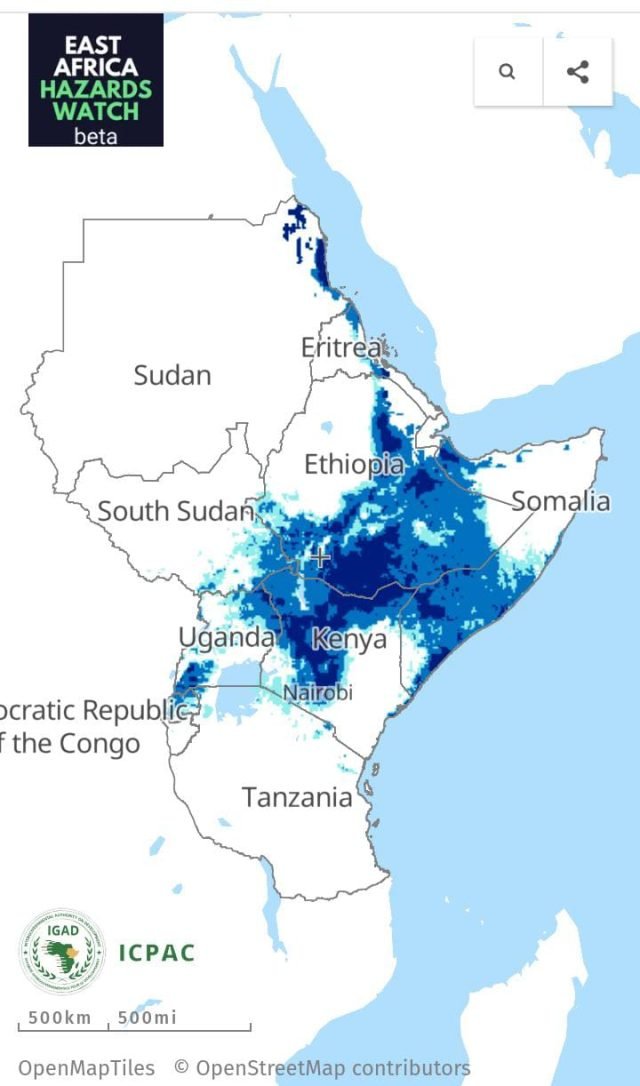Torrential rainfall and flooding in the Greater Horn of Africa region have resulted in misery and suffering with over 193 people confirmed dead due to drowning while another 700,000 have been displaced due to the ongoing heavy rainfall.
In a statement, the Igad Climate Predictions and Applications Center (ICPAC), says heavy rainfall that has been recorded in the past few days, has caused widespread flooding in the region including Kenya and neighboring countries like Ethiopia, Somalia, Tanzania, and Burundi.
While terming it a climate emergency, ICPAC says, “The extent of the impacts of these floods shows the gaps in preparedness and early action despite early warning information being availed on time.”
The regional climate body while quoting data provided by the Kenya RedCross says persistent rainfall across Kenya’s northern and central counties and the capital Nairobi has led to widespread flooding, displacing an estimated 11,000 people and killing 38 people since the beginning of the rainy season less than a month ago. The current data provided by the government indicates that 70 people have perished through drowning.
“In Tanzania, flooding and landslides caused by weeks of heavy rain have killed 155 people and injured 236 others, according to the country’s prime minister,” says the statement and adds, “Similarly, heavy rainfall in the Ethiopian highlands and across Somalia, is intensifying, with flash floods reported in some places, and while in Burundi, around 96,000 people were reported to have been displaced by months of relentless rains.”
Uganda has also suffered heavy storms that have caused riverbanks to burst, with two fatalities confirmed so far and several hundred villagers displaced.
The regional climate body warns that the dual, flooding and landslides, “disasters result in compounded impacts, intensify human and economic losses and deepen inequality,” and notes that, “Governance to address these challenges is an essential investment to reduce risks such as reduction of disaster risk and losses in lives, livelihoods and health and in the economic, physical, social, cultural and environmental assets of persons, businesses, communities, and countries.”
ICPAC is appealing to disaster risk management authorities in the member states to scale up their preparedness actions based on the weather and hydrological forecasts, “so as to act in good time.”
They are urging countries that have anticipatory action in place, to stand ready to activate in good time adding that ICPAC will provide technical assistance on weather and hydrological forecast as well as on thresholds to enhance preparedness.
Climate Scientists are urging for close monitoring of weather forecasts provided by national hydro-meteorological institutions so as to take timely action to mitigate potential risks associated with floods and potential landslides. “Based on the climate and hydrological forecast from ICPAC, certain regions are expected to experience increased rainfall, raising the risk of floods in specific areas,” they warn.







